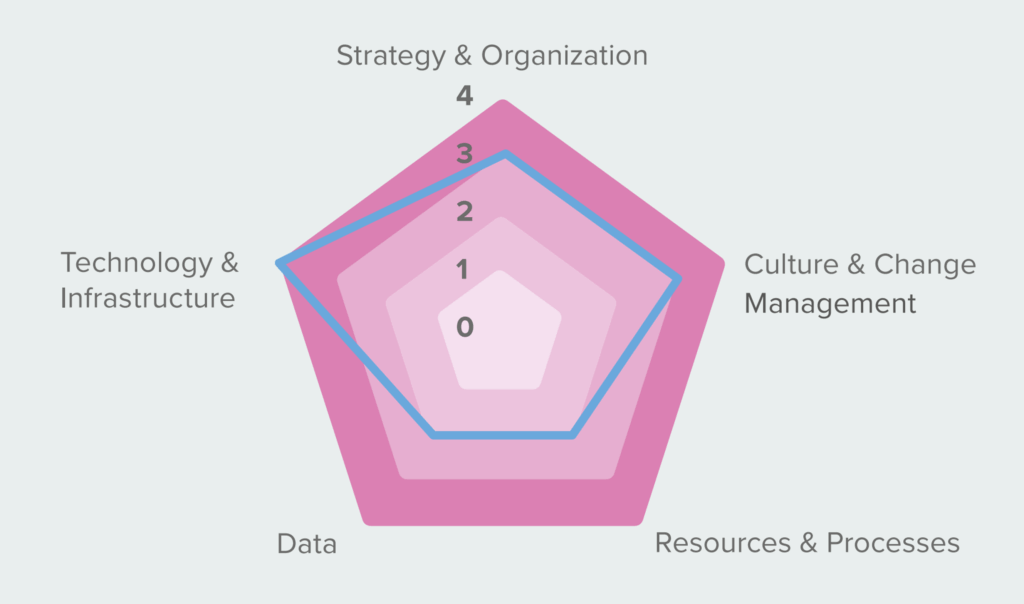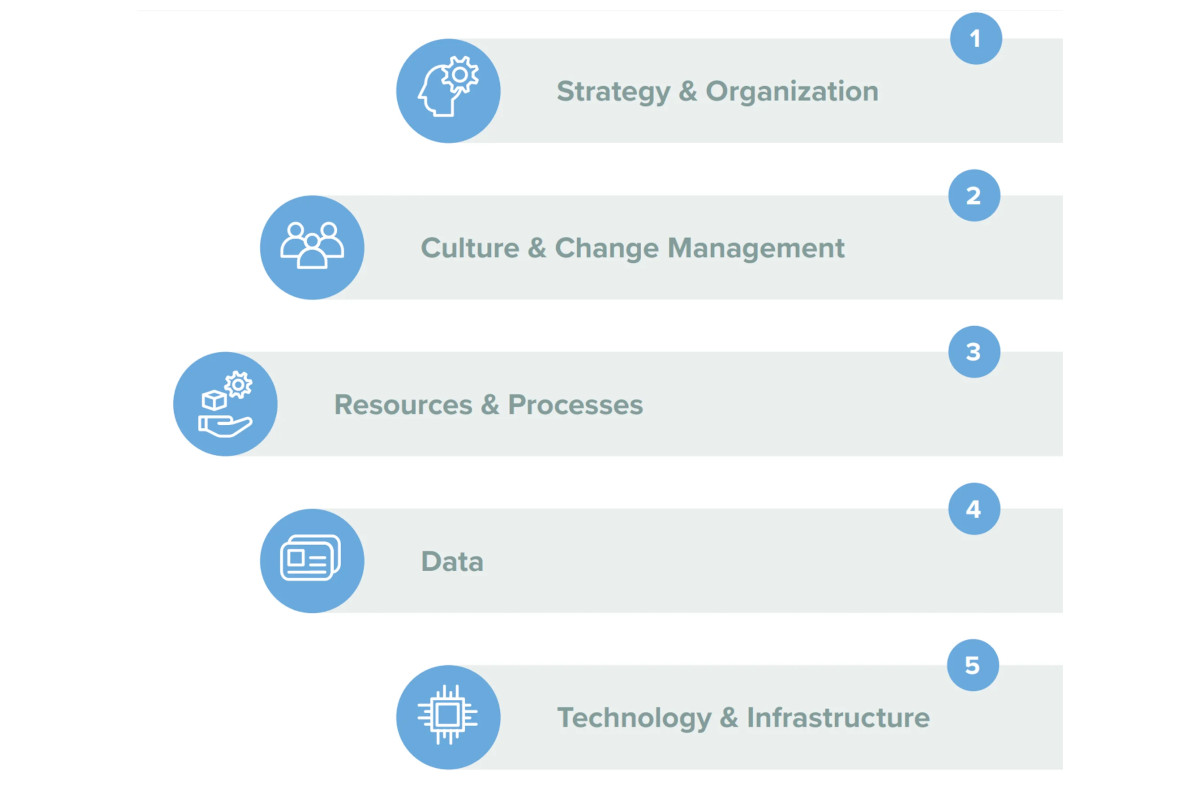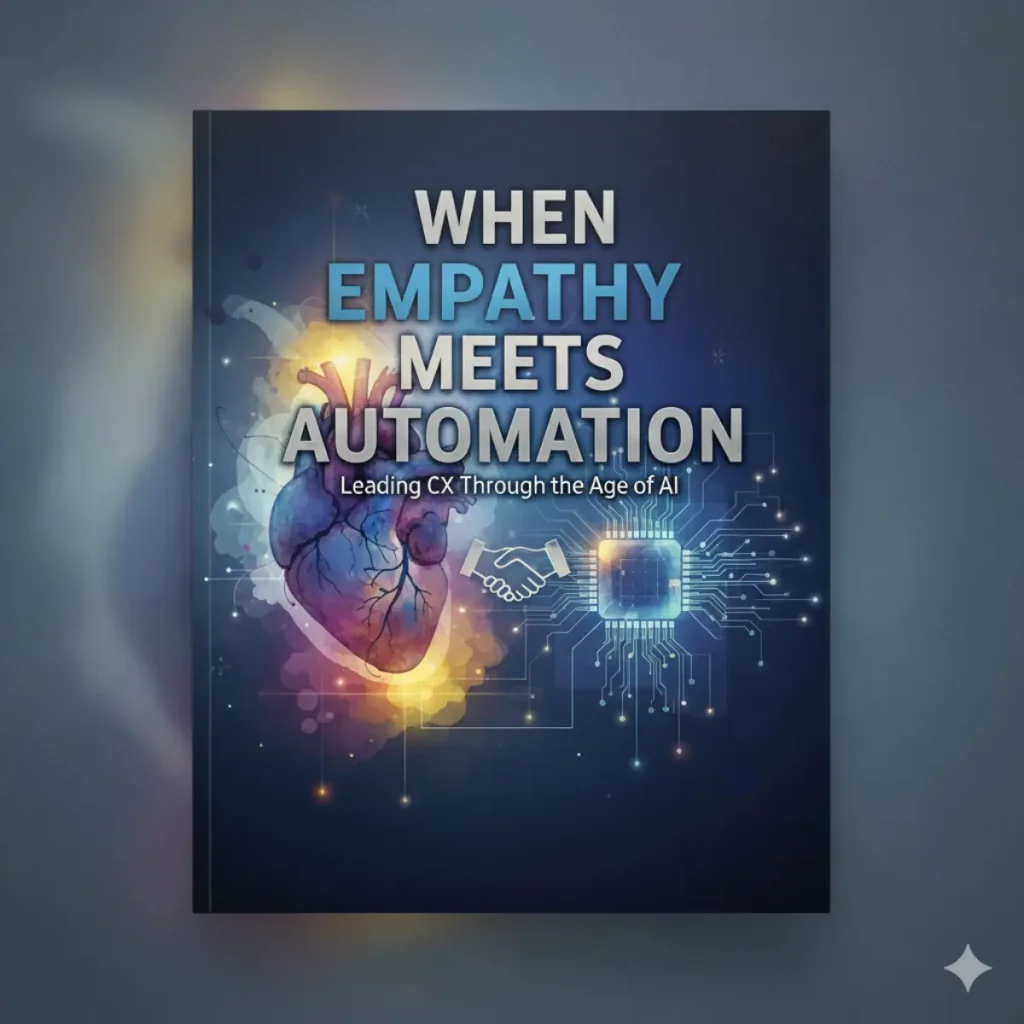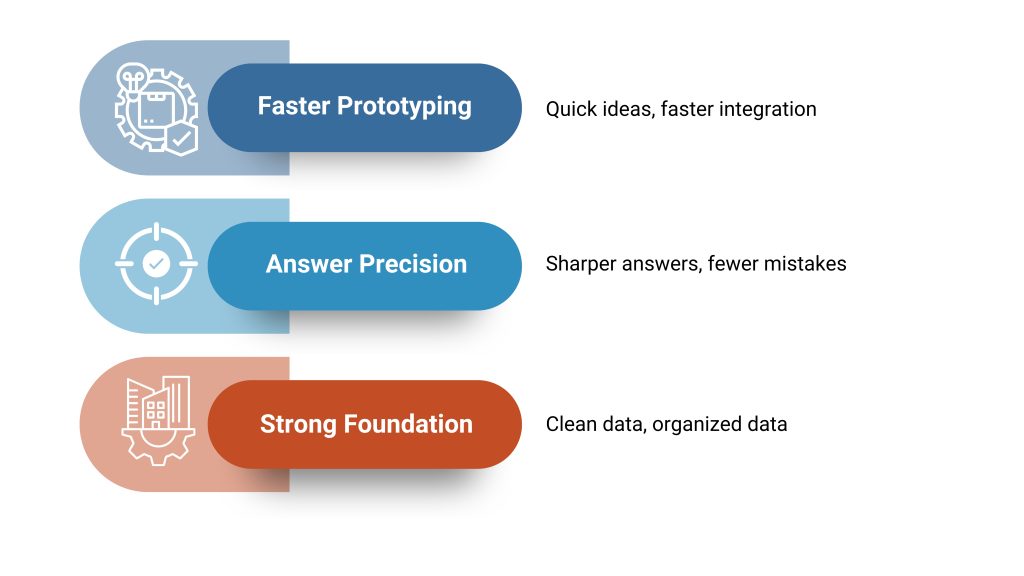Organizations everywhere have discovered that getting a prototype to work is not the same as creating repeatable value with artificial intelligence (AI). Our research program distilled what separates isolated proofs-of-concept from sustainable, scaled adoption: five mutually reinforcing dimensions that must mature together:
- Strategy & Organization,
- Culture & Knowledge Management,
- Resources & Processes,
- Data, and
- Technology & Infrastructure.
What you’ll learn: a diagnostic for each dimension, concrete “do next” actions, and a staged roadmap that aligns with your organization’s current maturity so you can scale AI without losing speed, safety, or trust.
Why strategic AI scaling is hard (and worth it)
Scaled AI pays off across four value vectors:
- efficiency & process simplification,
- better risk management,
- improved customer offerings, and
- higher talent attractiveness
— but only when solutions are integrated end-to-end, monitored, and embedded into line operations rather than left as pilots.
Yet most companies stall between pilots and scale because the non-technical work (governance, change, data quality, process integration) is underestimated. A holistic approach — spanning strategy, teams, methods, culture, and tech — is required.
The five dimensions of strategic AI scaling — what “good” looks like and what to do next
Below we summarize the success criteria and “no-regrets” moves for each dimension. Use these as a maturity checklist and as prompts for your quarterly planning.
1) Strategy & Organization
What good looks like. AI is embedded in corporate strategy, translated into governance with clear roles, responsibilities, and processes (often coordinated via a Center of Excellence), and aligned to the tech and data strategy. Use cases are selected for business value and feasibility, starting with high-impact quick wins in motivated units.
Do next.
- Codify a single AI ambition tied to P/L (profit or loss) and risk outcomes; publish annually.
- Stand up or sharpen a Center of Excellence (CoE) to set standards, accelerate reuse, and coach delivery teams.
- Build an AI investment board with stage gates from exploration to scaling; require quantifiable key performance indicators (KPIs) for go-live and for post-go-live benefits tracking.
2) Culture & Knowledge Management
What good looks like. Broad artificial intelligence literacy, pragmatic acceptance of opportunities & limits, and structured knowledge sharing. Change is managed proactively; communities, mentoring, and reverse mentoring spread skills. Expectations are realistic; leadership communicates transparently.
Do next.
- Launch a planned change process early, including change agents in every function.
- Run AI literacy sprints (intro + hands-on use-case labs) and publish a living FAQ with risks & benefits; favor explainable approaches where possible.
- Formalize mentoring/coaching and a knowledge hub (patterns, components, datasets, post-mortems).
3) Resources & Processes
What good looks like. Dedicated budgets beyond single projects, standardized lifecycle processes from idea to machine learning operations (MLOps), and governance that turns strategy into operational routines. Management attention shifts from exploration to business-case logic.
Do next.
- Define a portfolio intake & prioritization process with scoring for value, risk, and data readiness; set decision rights and cadences.
- Make expectation management explicit — clear targets, buffers for iteration, frequent readouts.
- Involve IT early to avoid resource bottlenecks; secure executive sponsorship for cross-functional blockers.
4) Data
What good looks like. Central data platforms (lakes/warehouses), robust governance & quality monitoring, documented lineage & metadata, and legal compliance (GDPR, works council, sector rules). Data engineers enable preparation; scientists reuse curated assets.
Do next.
- Run a company-wide data inventory; fix critical gaps; publish a data catalog and owners.
- Establish a data strategy and operating model (access policies, quality service level agreements (SLAs), stewardship).
- Automate quality & security checks (validation, access control, anomaly detection, backups).
5) Technology & Infrastructure
What good looks like. Standardized development / testing / production (dev / test / prod) environments, scalable computing resources (cloud and/or on-premises, i.e. hosted on local infrastructure), robust integration into existing systems, and platform-embedded governance (performance/version controls). Over time, multi-platform independence and capability to train/host own models where business-critical.
Do next.
- Decide deliberately on proprietary vs. open-source and avoid lock-in for core processes; right-size features (avoid over-engineering).
- Invest in observability and reliability (high availability / disaster recovery (HA/DR), monitoring, MLOps).
A staged roadmap: from pilots to pervasive scale
Our interviews revealed four development stages. Use them to calibrate your next step rather than attempting a “big bang.”
- Stage 1 – First AI experiences: exploratory learning; ad-hoc tools; low governance. Objective: learn fast, document lessons.
- Stage 2 – Initial use cases (proofs of concepts (PoCs)): targeted pilots in real contexts; expand expertise; test limits; prepare for beyond-PoC.
- Stage 3 – Coordinated implementation: portfolio view; standardized methods; scaling patterns; focus on efficiency & reuse.
- Stage 4 – Company-wide integration: AI embedded in daily operations and management; continuous improvement loop runs.
A spider diagram across the five dimensions helps visualize imbalances (e.g., strong platforms but weak data governance) and guides targeted investments.

Compliance & risk: align with evolving standards (2024–2027)
- The EU Artificial Intelligence Act (EU AI Act)[1] entered into force on 1 Aug 2024; prohibited practices and AI literacy obligations began applying 2 Feb 2025; governance and general purpose AI (GPAI) transparency obligations apply from 2 Aug 2025; most remaining provisions apply by 2 Aug 2026, with extended timelines (e.g., some high-risk systems in regulated products until 2 Aug 2027).
- Consider adopting ISO/IEC 42001 (AI management systems) to systematize governance and to demonstrate responsible AI practices.[2]
- Use NIST AI RMF 1.0 (National Institute of Standards and Technology Artificial Intelligence Risk Management Framework)[3] (Govern – Map – Measure – Manage) and the NIST Playbook[4] to operationalize AI risk management across the lifecycle.
Practical tip: Map your current controls to EU AI Act obligations, ISO 42001 clauses, and NIST AI RMF functions once per quarter to identify gaps and avoid duplicate effort.
Putting it to work this year: a one-year action plan
Quarter 1 | Baseline & Focus
- Conduct a company-wide AI maturity self-assessment across the five dimensions.
- Identify top 3–5 priority use cases with value, risk, and data feasibility.
- Establish a lightweight AI governance board and define success metrics.
- Begin AI literacy bootcamps and nominate change agents in each function.
Quarter 2 | Build Enablers
- Launch a company-wide data inventory and create the first data catalog with owners.
- Formalize knowledge sharing hubs (patterns, components, datasets).
- Set up standardized lifecycle processes from idea to PoC, including clear decision gates.
- Expand mentoring, coaching, and reverse mentoring programs.
Quarter 3 | Deliver & Integrate
- Implement at least 3–4 pattern-based use cases, ensuring end-to-end process integration.
- Scale common components (e.g. data pipelines, monitoring tools) to accelerate reuse.
- Deploy quality assurance, monitoring, rollback procedures in production environments.
- Engage IT and business jointly in benefits tracking and lessons-learned workshops.
Quarter 4 | Review, Scale & Institutionalize
- Conduct a comprehensive benefits review against KPIs and adjust roadmap.
- Standardize reusable assets; retire low-value or underperforming pilots.
- Strengthen AI governance and compliance alignment with EU AI Act, ISO 42001, NIST RMF.
- Update corporate artificial intelligence strategy for the coming year, integrating cultural and organizational learnings.
Common failure patterns (and how to avoid them)
- Pilot islands without process integration → Force end-to-end (E2E) ownership and line accountability.
- Underestimating data work → Inventory and stewardship before model training.
- Over-engineering platforms → Start simple, expand by proven need; avoid one-way vendor lock-in.
- Hype-driven expectations → Publish realistic targets, communicate progress & setbacks.
At-a-glance checklist
- Corporate AI strategy + CoE in place and tied to business KPIs.
- Change plan running; AI literacy measured; mentoring active.
- Standard lifecycle from idea → PoC → Scale with gates and quality assurance (QA).
- Data catalog, owners, quality SLAs, and compliance controls.
- Platform standards for dev / test / prod; observability & reliability baked in.
Notes on sources and updates
This framework and the maturity model are based primarily on our study on Strategic AI Scaling (CBS International Business School & SKAD AG), including expert interviews and the resulting maturity model and first-step recommendations.[5] Where we reference recent regulatory and standards updates, we cite official EU and standards bodies.








